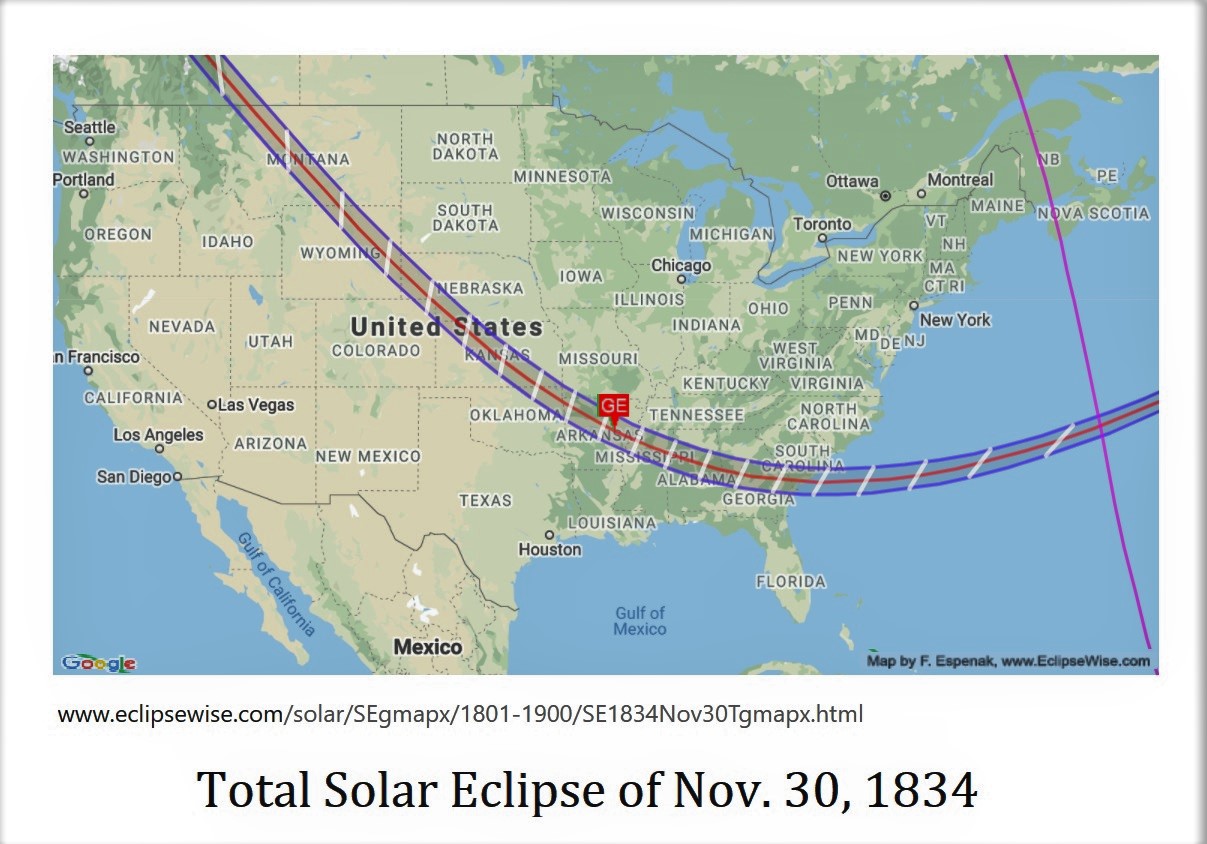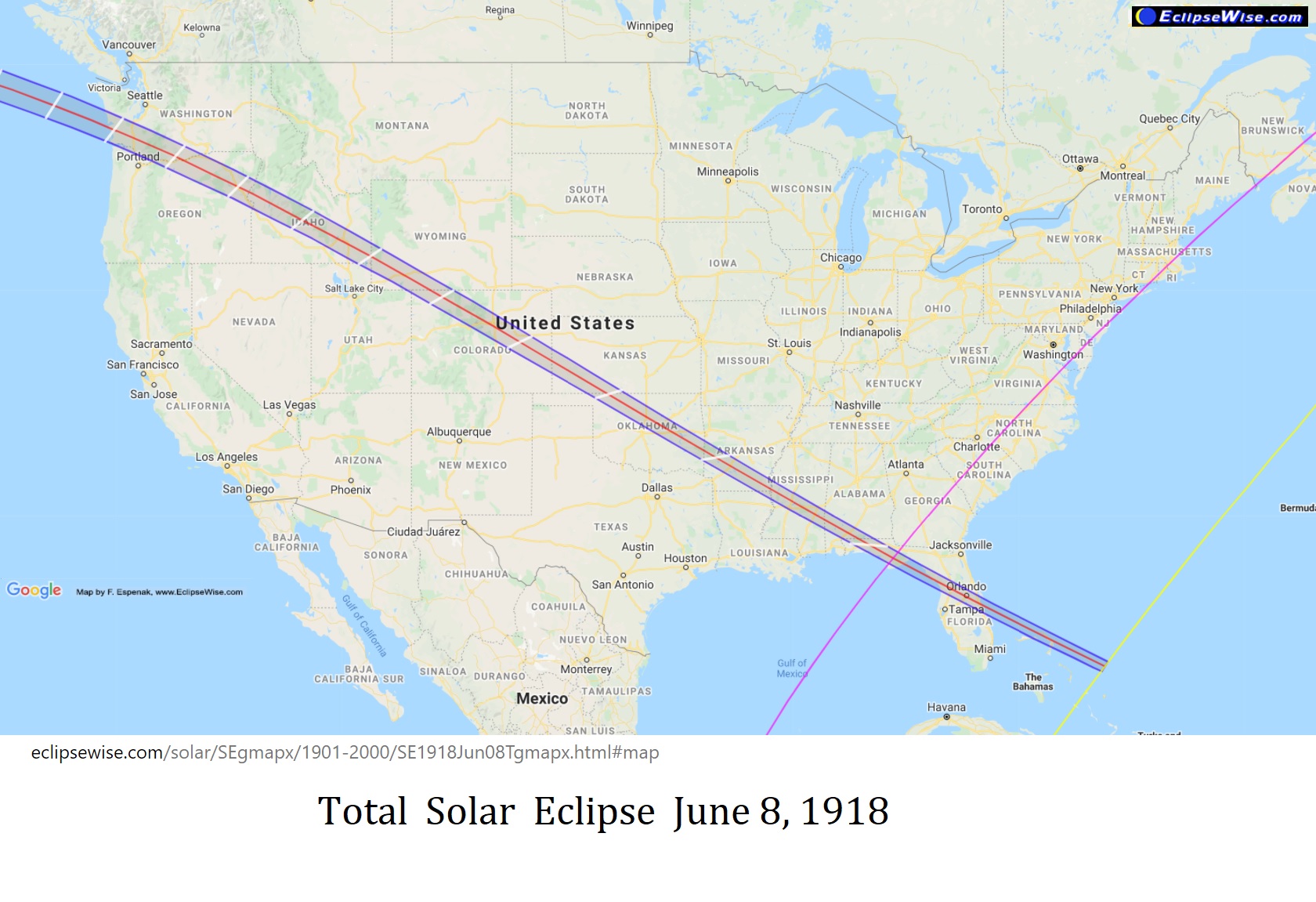Arkansas' Eclipse History

Two total eclipses have passed through Arkansas since it became part of the United States following the Louisiana Purchase. The map on the left shows the path of the 1834 event. The path of the 1918 event is shown at the bottom of the page.
The newspaper clipping below is taken from the Arkansas Democrat, June 10th, 1918 edition.


Since the time that this area became known as Arkansas, following the Louisiana Purchase, two total solar eclipses have crossed the state: one in 1834 and the second in 1918.
The first one, in 1834, occurred while we were known as Arkansas Territory. Two years later we became the 25th state to join the union. On Sunday, Nov. 30, 1834, the totality path crossed the territory from west to east. Entering where today is the city of Fayetteville and exiting at the site of today’s Helena, Arkansas. The frontiersmen that had settled near the Little Rock on the Arkansas River in the center of the territory, experienced one minute and thirty-six seconds of totality!
A neat fact about this eclipse was that the maximum point of the total eclipse occurred in what is now known as Prairie County, Arkansas. The maximum eclipse time there was two minutes and 1.8 seconds. The shadow was at its largest of the whole eclipse path.
The second total eclipse in Arkansas’ history occurred a little over one hundred years ago in 1918. On that Saturday afternoon, June 8, 1918, the moon’s shadow entered the state near Mena, Arkansas. It progressed diagonally across the state to exit near Eudora, Arkansas. The duration at Mena was one minute eleven seconds, and it had decreased to one minute six seconds by the time the shadow crossed the Mississippi River. Since the moon was 3.6 days past perigee, the shadow was only fifty-five miles wide. With the late afternoon sun being only 17 degrees in altitude, the shadow stretched seventy-seven miles front to back. Its narrow path left Hot Springs and Little Rock outside of totality.
Little Rock had a partial eclipse of 98% at 6:35 p.m. Unfortunately, it was not viewable in Little Rock and most of the state, with the weather that day being mostly cloudy. Newspaper reports on the eclipse from Arkadelphia, Camden, and Little Rock start with the line, “Clouds Obstruct View of Eclipse”.
